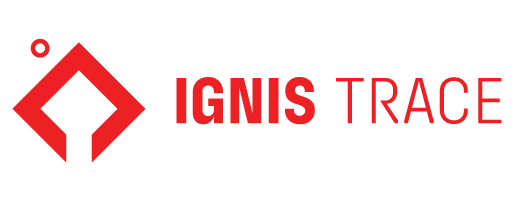
Underfloor heating systems with combi boiler are a popular choice for comfortable and efficient heating. However, for these systems to function effectively, the boiler must operate at a specific temperature. Typically, the temperature setting for underfloor heating should be between 35 and 50 degrees Celsius. This range maintains sufficient heat for effective heating while preventing the system from overheating. Temperatures below 35 degrees may result in water that is not heated sufficiently by the boiler, leading to ineffective heating. Conversely, temperatures above 50 degrees can create excessive pressure in the system and lead to energy wastage.
Setting the boiler at the correct temperature is crucial for both comfort and energy efficiency. The optimal temperature setting ensures adequate heating and minimizes energy consumption. The operating principle of combi underfloor heating systems is based on spreading heat more evenly across a larger surface area at lower temperatures. Therefore, proper temperature setting of the boiler is vital for achieving the expected performance from the system.
What are Combi Underfloor Heating Systems?
Combi underfloor heating systems are heating systems that are used in conjunction with a combi boiler and are designed for underfloor heating. These systems typically operate by circulating water through a network of pipes under the floor. The combi boiler, usually powered by natural gas or electricity, heats the water to the desired temperature to provide the necessary heat for the underfloor heating system. The underfloor heating pipes are laid beneath the floor and distribute the heat evenly to warm the rooms. Combi underfloor heating systems offer not only comfortable heating but also advantages in energy efficiency and space utilization.
Combi underfloor heating systems are commonly used in homes, workplaces, and other buildings to meet heating needs. They have many advantages over traditional radiator or fan coil units. For instance, underfloor heating systems provide more even heat distribution in rooms, creating a more comfortable environment. Additionally, the heat emitted from the pipes under the floor reduces the circulation of dust and allergens in the air, creating a healthier indoor environment. Furthermore, combi underfloor heating systems offer more space for walls and furnishings, providing more flexibility in decoration.
How Does a Combi Underfloor Heating Work?
A combi underfloor heating system is a heating solution that combines a boiler system and operates primarily on the principle of heating water and circulating it through a network of pipes under the floor. The combi boiler is a device that typically runs on natural gas or electric energy. In the first step, a fuel source (usually natural gas) or electric energy within the combi is used to heat the water. The heated water is then pumped through the pipe network and circulates through the pipes laid beneath the floor. These pipes are usually made of durable materials like polyethylene or polypropylene and are located under the floor of the rooms.
As the hot water circulates through the pipes, the heat is distributed through the floor material and used to warm the rooms. This method provides more even heat distribution in the rooms and heats the entire floor for more comfortable warming. The combi is typically controlled by thermostats or timers, regulating the heating and circulation of water according to the desired temperature settings. Thus, the combi underfloor heating system provides energy efficiency while offering a comfortable indoor environment for the user.
How to Set the Combi for Underfloor Heating?
Setting the combi in underfloor heating systems is important for achieving the desired efficiency and comfort from the system. The combi setting is usually done through the boiler's control panel or a thermostat. Initially, it is necessary to determine the temperature setting of the combi. This setting controls the temperature of the water produced by the combi. The ideal water temperature for underfloor heating systems is typically between 35 and 50 degrees Celsius. This range provides adequate heating and also helps in saving energy.
When setting the combi, factors such as outside air temperature and building insulation should also be considered. In cold weather conditions or in a poorly insulated space, the combi temperature setting might be higher. However, in better insulated and milder conditions, the temperature setting can be lower. Therefore, seasonal changes and building characteristics should be taken into account when setting the combi temperature. Additionally, it is important to periodically check and adjust the combi settings to ensure optimal performance of the system.
What is the Ideal Combi Boiler Temperature for Underfloor Heating?
Determining the ideal temperature for your underfloor heating boiler is essential to ensure your system operates efficiently while providing the desired level of comfort. Underfloor heating systems are designed to work with low-temperature water, unlike traditional radiator systems that require higher temperatures. For most installations, the ideal combi boiler temperature for underfloor heating ranges between 35°C and 50°C (95°F to 122°F).
This temperature range is optimal because underfloor heating works by evenly distributing heat across a large surface area, which allows for effective heating at lower water temperatures. Setting your boiler to a higher temperature, such as 60°C or above, can result in excessive energy consumption and may damage your flooring materials over time. On the other hand, if the temperature is set too low, your home may not reach the desired warmth, particularly in colder weather.
Key Factors to Consider
- Floor Material: Different flooring materials have different thermal properties. For example, tiles conduct heat more effectively and can tolerate slightly higher temperatures, whereas wood or laminate may require a lower boiler setting to prevent damage.
- Room Insulation: Well-insulated rooms require lower boiler temperatures compared to spaces with poor insulation. Proper insulation ensures that heat is retained, allowing the system to maintain comfort without overworking the boiler.
- External Conditions: In colder climates or during winter months, setting the boiler temperature closer to 45-50°C is often recommended. In milder weather, lowering it to 35-40°C may suffice, reducing energy usage.
Consistent Heating for Efficiency
One of the critical aspects of using underfloor heating is maintaining a consistent temperature rather than frequently turning the boiler on and off. Continuous low-temperature operation not only enhances comfort but also minimizes energy waste. This steady-state heating is particularly important for homes with modern combi floor heating systems that are optimized for low-energy consumption.
By adhering to the recommended temperature settings and considering factors like insulation and flooring, you can optimize your underfloor heating boiler adjustment for both comfort and efficiency.
Boiler Temperature Guide: Optimal Settings for Underfloor Heating Systems
Getting the boiler temperature settings right for underfloor heating boiler systems is vital to achieving a comfortable and energy-efficient heating experience. Unlike traditional radiators, underfloor heating systems are designed to operate at much lower temperatures, which makes them not only more efficient but also better suited for maintaining consistent heat across large areas.
Recommended Boiler Temperature Ranges
For optimal performance, the boiler temperature for underfloor heating should typically be set between 35°C and 50°C (95°F to 122°F). This range ensures that the water circulating through the underfloor pipes delivers enough heat to warm the space effectively without wasting energy. Below are some specific recommendations based on different scenarios:
- Mild Weather Conditions: During spring or autumn, when the temperature outside is moderate, setting the boiler temperature to 35°C to 40°C is usually sufficient. This keeps your home warm without overburdening the system.
- Cold Weather or Winter Months: In colder months, you may need to increase the boiler temperature to 45°C to 50°C to compensate for the lower external temperatures. This ensures that your underfloor heating system can maintain a comfortable indoor environment.
- Flooring Type: Flooring materials also impact the required boiler temperature. For example:
- Tile or Stone Flooring: These materials are excellent conductors of heat, so the system can operate efficiently at the lower end of the recommended range (35-45°C).
- Wood or Laminate Flooring: These materials are more sensitive to high temperatures, so keeping the boiler temperature closer to 35-40°C is advisable to prevent damage.
Key Considerations for Boiler Settings
- Thermostat Placement: Ensure that thermostats are properly positioned to measure the actual room temperature rather than the heat near the floor. This helps maintain consistent heating and avoids unnecessary energy usage.
- Weather Compensation Technology: Many modern combi boilers include weather compensation sensors that adjust the boiler temperature automatically based on external weather conditions. Using this feature can simplify managing your underfloor heating boiler adjustment while improving efficiency.
- Flow Temperature vs. Return Temperature: Underfloor heating systems work on the principle of low flow and return temperatures. Maintaining a return temperature of 25-30°C ensures that the system circulates water effectively without overheating or wasting energy.
Avoiding Common Mistakes
One common mistake is setting the boiler temperature too high, thinking it will warm the room faster. However, this can lead to inefficiencies and increase energy consumption without significantly speeding up the heating process. Instead, allow the system to warm up gradually at the recommended temperature settings for consistent, cost-effective heating.
In conclusion, by keeping the boiler temperature within the ideal range and considering factors such as flooring type, weather, and thermostat placement, you can maximize the efficiency and performance of your underfloor heating boiler system. Adjusting the settings thoughtfully ensures that your home stays warm, comfortable, and energy-efficient throughout the year.
How to Ensure Energy Efficiency in Underfloor Heating with Boiler Temperature Adjustment?
Optimizing energy efficiency in an underfloor heating boiler system starts with properly adjusting the boiler temperature settings. Underfloor heating is inherently more efficient than traditional radiator systems due to its ability to evenly distribute heat at lower temperatures. However, without correct adjustments and proper use, you may miss out on its full energy-saving potential. Here’s how to ensure your system operates efficiently and cost-effectively.
1. Set the Boiler Temperature Correctly
The foundation of energy efficiency lies in maintaining the ideal boiler temperature for underfloor heating. For most homes, a boiler temperature between 35°C and 50°C (95°F to 122°F) provides the perfect balance of comfort and efficiency. This range ensures that the water heating the pipes doesn’t waste energy or overheat the system while still providing adequate warmth to your home.
Using lower temperatures, particularly in well-insulated homes, minimizes heat loss and reduces energy consumption. A lower flow temperature (closer to 35°C) works effectively in milder weather or well-insulated spaces, while a slightly higher setting (around 45°C to 50°C) may be required in winter or poorly insulated rooms.
2. Utilize Thermostats for Zone Control
One of the best ways to maximize efficiency in underfloor heating is to install thermostats in each room or zone. These thermostats allow you to control the temperature independently for different areas of your home, ensuring you only heat spaces that are in use. For example:
- Lower the temperature in rarely used rooms to save energy.
- Keep living areas at a comfortable level (around 20-22°C) while maintaining slightly cooler temperatures (18-19°C) in bedrooms.
This type of zone control prevents unnecessary heating and helps regulate energy use effectively.
3. Take Advantage of Smart Controls
Modern combi floor heating systems often include smart heating controls or apps that can optimize your boiler settings based on real-time usage and weather data. Features such as scheduling, remote adjustments, and weather compensation automatically adjust boiler temperatures to ensure energy isn’t wasted. For example, the system can reduce heating during the day when no one is home and gradually increase it before you return.
4. Maintain Continuous, Low-Temperature Operation
Frequent on-off cycling of the boiler can reduce efficiency and wear out your system faster. Instead, allow the underfloor heating system to run consistently at a low temperature. Continuous low-temperature heating prevents energy spikes, reduces stress on your boiler, and ensures that the heat is distributed evenly throughout your home.
5. Enhance Home Insulation
Poor insulation can undermine the efficiency of even the best underfloor heating boiler adjustment settings. To maximize energy efficiency, ensure that your home is well-insulated. Key areas to address include:
- Wall and roof insulation to minimize heat loss.
- Proper sealing of windows and doors.
- Installing underfloor insulation to direct heat upward and prevent it from escaping below.
6. Use Weather Compensation Sensors
Weather compensation sensors, often included with modern combi boilers, automatically adjust the boiler's flow temperature based on the outside temperature. For example:
- On milder days, the system reduces the flow temperature to avoid overheating.
- On colder days, the system raises the flow temperature to ensure consistent warmth.
By dynamically adjusting to weather changes, this feature helps reduce energy consumption without requiring manual intervention.
7. Schedule Regular Boiler Maintenance
A poorly maintained boiler can consume significantly more energy. Regular maintenance, such as flushing the system to prevent blockages or checking for leaks, ensures the system operates at peak efficiency. For instance, sediment build-up in pipes or the heat exchanger can reduce heat transfer, forcing the boiler to work harder and use more energy. Annual servicing of your boiler is a simple yet effective way to keep energy usage in check.
Benefits of Energy Efficiency with Underfloor Heating
By fine-tuning your underfloor heating boiler system for energy efficiency, you can achieve:
- Lower Energy Bills: Using the correct temperature and settings prevents overconsumption of energy.
- Consistent Comfort: A steady, low-temperature operation creates a more comfortable and evenly heated environment.
- Extended System Lifespan: Proper adjustments reduce wear and tear on your boiler and heating components.
In summary, optimizing energy efficiency with boiler underfloor heating installation requires a combination of correct temperature settings, smart controls, proper insulation, and consistent operation. These steps not only ensure your home stays warm and comfortable but also reduce your environmental impact and energy costs.
How to Use a Combi Underfloor Heating?
Using a combi underfloor heating requires users to effectively operate the combi to maintain a comfortable indoor temperature. Initially, it is important to understand the operating principles of the combi, which is typically controlled through a control panel or thermostat. Users can set their desired temperature settings according to their preferences. The ideal water temperature for underfloor heating systems is usually between 35 and 50 degrees Celsius.
When using the combi, factors such as seasonal changes and building characteristics should be considered. In cold weather conditions or in a poorly insulated space, the combi temperature setting might be higher. However, in better insulated and milder conditions, the temperature setting can be lower. Users can adjust the combi's temperature setting according to these factors to ensure their comfort and save energy.
How to Maintain a Combi Underfloor Heating?
Regular maintenance of the combi underfloor heating is crucial for ensuring the system operates reliably and has a long lifespan. Maintenance tasks should generally be performed by a qualified technician, but users can follow some simple steps themselves. Initially, the combi and the underfloor heating system should be turned off and allowed to cool. Then, the filters on the combi should be cleaned or replaced. Filters ensure clean water flow and prevent blockages in the system.
Subsequently, the internal and external components of the combi should be inspected and cleaned. Accumulation of dust and dirt can adversely affect the performance of the combi, so regular cleaning is important. Additionally, the water pressure in the combi should be checked and adjusted if necessary. Water pressure should be maintained at a certain level to ensure effective operation of the system. Furthermore, the gas pressure of the combi should also be regularly checked and adjusted if necessary.
What to Consider When Choosing a Combi Underfloor Heating?
There are several important factors to consider when choosing a combi for underfloor heating. First, it is important that the combi has the appropriate capacity. A combi of the correct capacity should be selected according to the size of the building and the heating needs. This ensures effective warming of the rooms and increases energy efficiency. Additionally, the efficiency of the combi should also be considered. Higher efficiency levels save energy and offer lower operating costs in the long term.
Another important factor is the type of fuel for the combi. Combi boilers are available with various fuel types, such as natural gas, electricity, or liquid fuel. The choice of fuel should be based on availability, cost, and environmental impacts. Natural gas is usually a more common and economical option, but electric or liquid fuel combis may be more suitable in some cases. Additionally, the ease of installation and maintenance of the combi should also be considered. Users should prefer models that provide easy access for installation and maintenance, which can reduce operating and maintenance costs in the long run.

 Türkçe
Türkçe



